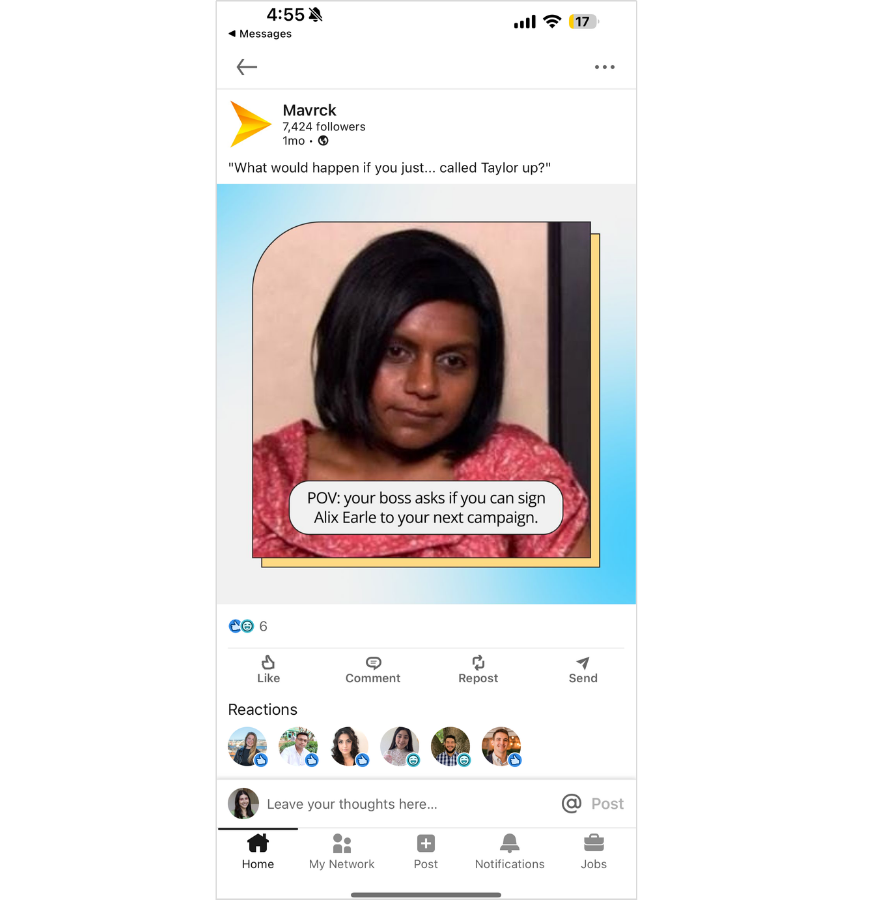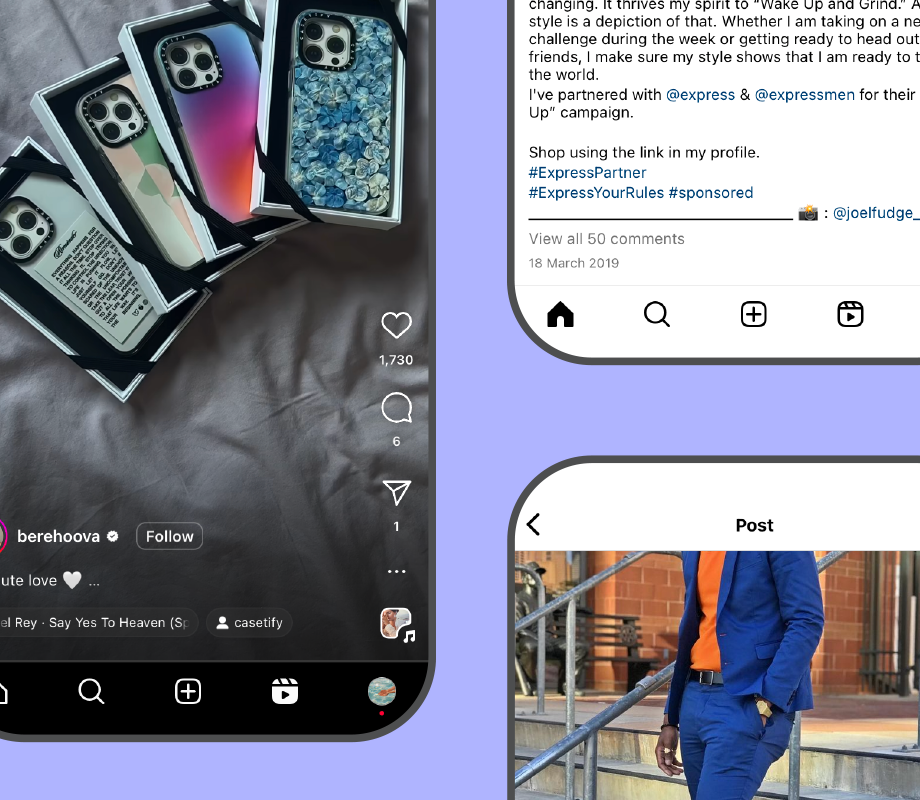So, you’ve dipped your toes into influencer marketing and you’re wondering whether your business could benefit from a dedicated strategy lead.
But what does an influencer marketing manager do? What do they need to succeed? And how can you best optimize your influencer marketing strategy?
We're sharing everything you need to know about influencer marketing managers — plus a helpful platform to take your marketing strategy to new heights.
Table of Contents
What Is an Influencer Marketing Manager?
An influencer marketing manager is a marketing professional who leads a brand’s influencer marketing strategy.
Simply put, they know how to land, manage, and measure the best influencer partnerships — so you can reach your target audience and get the most out of your marketing campaigns.
Wondering how an influencer marketing manager compares to a social media manager? Bookmark this: How to Become a Social Media Manager — According to Later's Social Team.
What Is an Influencer Marketing Platform?
An influencer marketing platform is software designed to help brands connect with top creators, streamline campaign management, and create lead-driven, targeted campaigns.
Platforms like Later Influence™ handle campaigns from start to finish, all in one place — making them a major plus for influencer marketing managers working solo, or for enterprise companies looking to boost their marketing efforts.
Want to learn more about how Later Influence could be the best solution to power your influencer marketing strategy? Schedule a call today.
What Does an Influencer Marketing Manager Do?
Depending on their expertise and the size of the company they work for, an influencer marketing manager’s workday can cover a wide range of responsibilities. Here are their three main tasks:
#1: Relationship Building & Outreach
When it comes to influencer marketing managers, building relationships is the name of the game.

Whether it’s outreach, negotiations, or wrapping up a campaign — a key part of the job is managing short-term and long-term relationships with top creators.
The best part?
When it’s time for a unique campaign, influencer marketing managers will come equipped with a shortlist of relevant influencers who'd be open to partner.
#2: Campaign Management
From drafting proposals to aligning with ongoing marketing efforts, influencer marketing managers see campaigns through from start to finish.
Over the course of a campaign, influencer marketing managers lead:
Creator outreach and negotiations
Support emails and calls
Reminders and check-ins
Reviews and approvals
Follow up communication post-campaign
Reporting and analysis post-campaign
TL;DR: It’s the influencer marketing manager’s role to create a smooth experience for all involved pre-, mid-, and post-campaign.
#3: Market Research & Trend Analysis
Given that influencer marketing campaigns live on social media, a large chunk of this lead’s day-to-day is spent tracking and relaying the latest industry trends and news to the broader marketing team.
Plus, the best influencer marketing campaigns capitalize on rising trends before they hit the mainstream.
ICYMI: With Later’s influencer marketing platform, you can get matched with top influencers and start automating multiple campaigns. Learn more.
What Skills Do Influencer Marketing Managers Have?
What makes an influencer marketing manager fit to lead your strategy? Here are the top seven skills to seek out:
#1: Ability To Make Connections
An influencer marketing manager’s job relies on their ability to make connections, so it’s no surprise they’re great with people.
Whether it’s reaching out to new influencers or checking in with current partners, their strong communication is what powers impactful influencer marketing campaigns again (and again).
#2: Ability to Multitask
Influencer marketing managers may not be circus folk, but their ability to juggle shouldn’t be overlooked.
They manage multiple budgets, relationships, campaign milestones, and deadlines to ensure ROI for your business — all at once, all the time.
#3: Creativity
It’s simple: coming up with standout campaign concepts requires creative thinking.
Between supporting ongoing marketing initiatives and preparing creative briefs for influencers, influencer marketing managers are as creative as they are technical.
NOTE: Giving influencers creative control is the recipe for a successful, “authentic” campaign — a great influencer marketing manager knows when to be hands-off.
#4: Ability to Pivot
Working with influencers can be unpredictable — deals fall through, influencers can be non-responsive, and plans can change.
Regardless of circumstances, an influencer marketing manager’s ability to roll with the punches is key to meeting campaign deliverables and getting everything across the finish line.
#5: Negotiation
A skilled influencer marketing manager is able to talk money.
In other words: they find common ground between influencers' expectations and the brand's budget, making for some pretty great partnerships.
#6: An Eye for What Works on Social
Being able to identify the type of content that works on social media, along with the brands (and creators) who are thriving on different platforms is an important skill.
#7: Detail-oriented
When it comes to a successful influencer marketing campaign, it’s all in the details.
The top influencer marketing managers pay close attention to their campaigns, ensuring influencers fulfill requirements and create quality content.
FYI: Later Influence is a leading influencer marketing platform trusted by enterprise businesses to plan, manage, and analyze campaigns. Schedule a call, now.
How Much Do Influencer Marketing Managers Cost?
On average, the most common influencer marketing manager salary in the US is $84K USD.
However, annual salaries sit as high as $149K and as low as $29K — indicating a massive range in how much influencer marketing managers can earn.
Why? Influencer marketing as a profession is still relatively new.
But as more businesses invest in their influencer marketing strategy and roles become more specialized, the average salary range for these roles will only continue to grow.
How Can You Best Optimize Your Influencer Marketing Strategy?
When it comes to the average business, a dedicated influencer marketing hire is pivotal to develop and sustain your strategy.
The most significant factor? Relationship management.
“An influencer marketing manager has the time to optimize your influencer marketing strategy,” says Later’s Influencer Marketing Manager, Kurtis Smeaton.
“So if your goal is to manage long-term relationships with certain creators, you’ll benefit from personalized, carefully selected partnerships you might not otherwise have the resources for.”
Even better? Influencer marketing managers and influencer marketing platforms joining forces to power the ultimate partnerships.
“Especially when leading large campaigns, discovering relevant influencers and tracking campaign performance in the matter of clicks is a huge plus,” adds Kurtis.
“It gives me more time to focus on the creative — aka what makes for the most impactful campaigns.”
Plus, the addition of a platform like Later Influence is perfect for enterprise businesses who may lack the resources to tackle influencer marketing in-house.
With it, you'll have discovery, outreach, and campaign management all taken care of. Yes, please.
Ultimately, regardless of whether you choose to hire an influencer marketing manager, opt for an influencer marketing platform, or both — make sure it's the right fit for your brand's overall goals and budget.
FYI: Later's tools and solutions are trusted by enterprise brands to discover creators, manage campaigns, and more. Schedule a call to optimize your influencer marketing strategy today.




